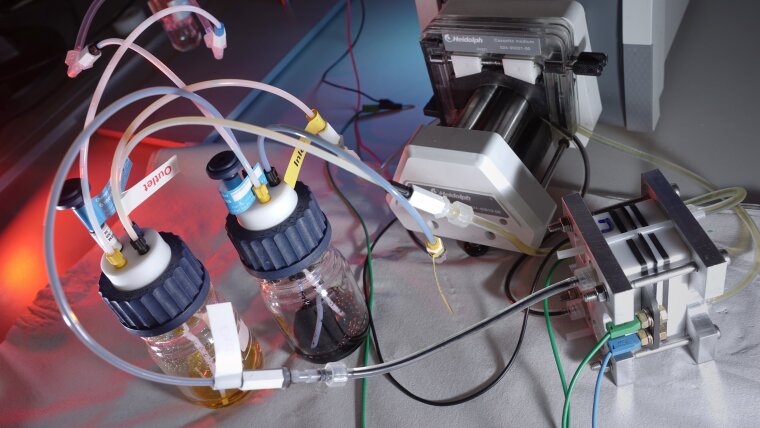
Published:
To ensure that a redox flow battery can be operated as efficiently as possible and in order to known how much energy it can take up or provide at any time, the so-called state-of-charge of both battery electrolytes must be measured during its operation. A longer known and cheap approach uses the practically currentless voltage measurement between a battery electrolyte and a so-called reference electrode (e.g., a silver-silver chloride electrode) to determine the state-of-charge of the battery electrolyte. Over longer measurement periods, however, this measurement becomes inaccurate because unpredictable changes occur at the reference electrode. This necessitates a time-consuming and frequent recalibration of the system. In the work recently published in the "Journal of Power Sources", scientists of the working group around Prof. Dr. Ulrich S. Schubert could now show that instead of the usual reference electrodes, the battery electrolyte itself can also serve as a kind of "reference electrode". This not only increases the temporal stability of the measurement and thus reduces the frequency of a necessary recalibration, but also enables a new type of recalibration that works 100 to 10,000 times faster than previous methods.
You can find the original work with the title „State-of-charge monitoring for redox flow batteries: A symmetric open-circuit cell approach” hereExternal link.